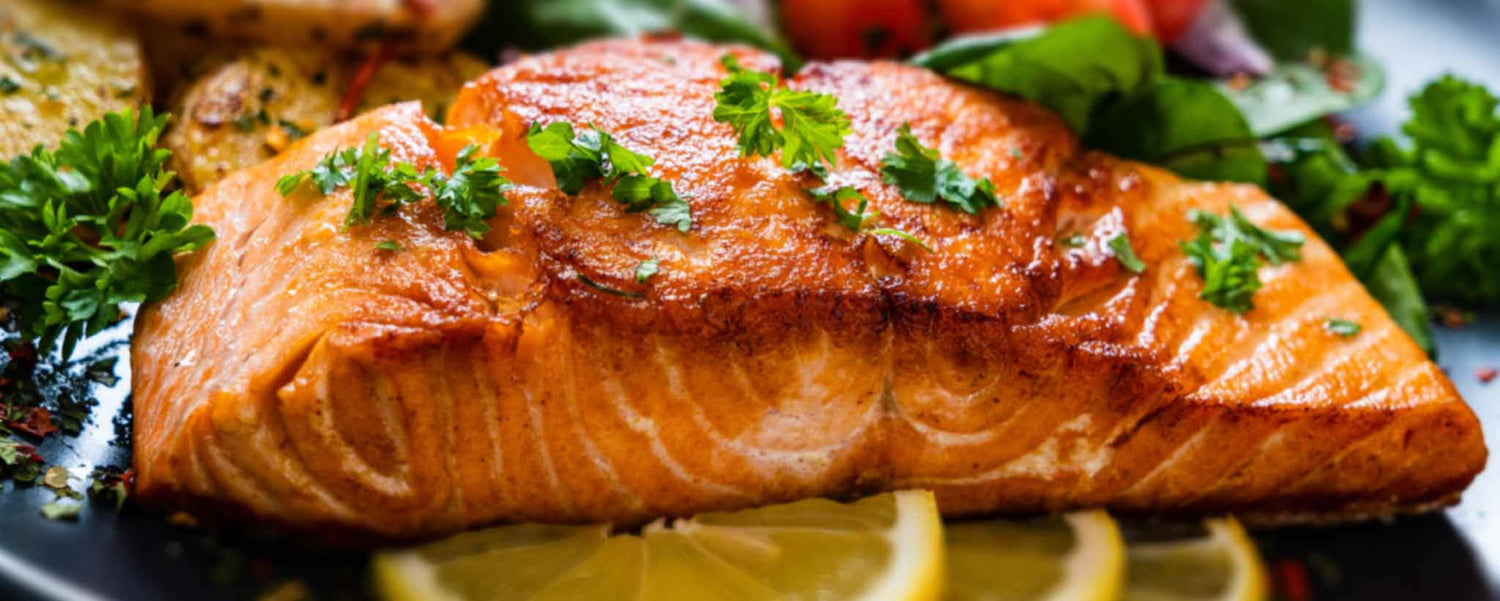Publish 23 February 2021
Left untreated, inflammation can lead to chronic diseases. Here are the best anti-inflammatory foods you can incorporate into your diet today.
Reasons and Reactions to Inflammation
Most inflammation is a physiological response to injury, infection, or illness. You often experience swelling, pain, heat, and redness. As a vital part of your body’s natural healing system, it signals the immune system to fight off infections, repair tissue damage, and heal up wounds.
Sometimes, an unfavorable lifestyle triggers an inflammatory response. This can result from poor diet and nutrition, increased stress levels, insufficient physical activity, and sleep deprivation. Inflammatory foods include sugar, high-fructose corn syrup, artificial trans fats, and refined carbohydrates. When inflammation occurs without an injury or infection to fight, the immune system attacks itself—the body’s cells, organs, joints, and tissues.
Left untreated for prolonged periods, inflammation can lead to chronic (and autoimmune) diseases such as diabetes, atherosclerosis, obesity, cancer, dementia, rheumatoid arthritis, Alzheimer’s disease, depression, and other fatal conditions.
Whether the cause of inflammation is injury, infection, or an unhealthy lifestyle, it is necessary to lessen its ensuing pain and symptoms. Apart from prescribed medications, certain anti-inflammatory foods help to reduce inflammation and chronic pain.
A major advantage of an anti-inflammatory diet is that it is a holistic, physiological therapy. So it is void of side effects such as brain fogginess, memory loss, allergic reactions, or stomach ulcers associated with anti-inflammatory medications.
Best 6 Anti-Inflammatory Foods1. Salmon

Image source: Pexels
Besides being an excellent source of protein, the fatty fish, salmon, is packed with long-chain omega-3 fatty acids DHA and EPA. They are metabolized into resolvins and protectins. These compounds help reduce inflammation that can lead to chronic diseases such as heart and kidney diseases.
Increasing your consumption of fatty fish, especially salmon, decreases the risk of rheumatoid arthritis (RA). It helps reduce joint pain and swelling in RA patients. Other fatty fish that can reduce inflammatory markers are mackerel, herrings, sardines, and anchovies… except tilapia or catfish.
2. Ginger

Image source: Foodies Feed
Ginger root has antioxidant, anti-inflammatory, and chemoprotective properties. It is common in traditional medicine to stop nausea, aid digestion, reduce severe inflammation, ease menstrual pains and aching joints from osteoarthritis. When you apply it topically, it helps to reduce swelling.
A 2010 research study reveals daily consumption of raw and heated ginger significantly reduces exercise-induced muscle injury and pain. [1]
3. Turmeric

Image source: Pexels
Turmeric contains a bioactive compound, curcumin, which loads it up with anti-inflammatory and therapeutic properties. Because of its curcumin content, turmeric helps to reduce inflammation caused by arthritis, diabetes, [2] and other chronic diseases. [3]
Combining the curcumin in turmeric with the piperine in black pepper increases curcumin bioavailability and absorption by 2000%. [4]
4. Hot Peppers

Image source: Foodies Feed
Hot peppers contain a compound, capsaicin, which is responsible for its spicy hot kick and enriches it with analgesic, anti-inflammatory, and healing properties. Capsaicin is used in topical creams and gels formulated for the treatment of neuropathic pain, osteoarthritic or lower back pain, and joint pains.
Chili, as well as bell peppers, are loaded with vitamin C, B-6, and antioxidants that help to improve the immune defenses and significantly reduce inflammation. Bell peppers deliver the antioxidant quercetin, which has been found to reduce a biomarker of oxidative stress in sarcoidosis [5] (an inflammatory disease). While chili peppers deliver sinapic and ferulic acid, which possess powerful anti-inflammatory and therapeutic benefits.
Spice up your meals with jalapenos, habaneros, cayenne, or serrano peppers.
5. Tart Cherries

Image source: Foodies Feed
Tart (and sweet) cherries are loaded with the antioxidant anthocyanins, which helps to alleviate pain and inflammation. Cherries also contain loads of vitamin C and polyphenols for improving the immune system and regulating select body functions.
A 2012 research study found that the antioxidants in tart cherry juice significantly reduce inflammation biomarkers in women suffering from inflammatory osteoarthritis, after 21 days of daily consumption. [6]
6. Grapes

Image source: Foodies Feed
Grapes are loaded with plant compounds anthocyanins and resveratrol, which help to reduce inflammation and lower the risk of chronic diseases. Resveratrol is also a phytoestrogen, so it helps to lower the risk of bone fracture and back pain in post-menopausal women. [7]
Additional Anti-Inflammatory Considerations
Other anti-inflammatory foods include pumpkin seeds, berries, garlic, mushrooms, broccoli, tomatoes, dark chocolate, cocoa, and green tea.

It is not enough to eat these foods individually; if you plate anti-inflammatory foods with foods that aggravate inflammation and pain, you will not observe remarkable results, or you might even suffer greatly. This means that your complete diet and nutrition need to be in sync.
Avoid or limit consumption of full-fat dairy products, deep-fried junk foods, over-processed carbs, and red meat. They supply high amounts of saturated fats, which raise insulin and bad cholesterol levels and cause inflammation.
A plant-rich anti-inflammatory diet plays an important role in pain management, but it must be accompanied by other health-promoting activities such as exercise, meditation, and sleep. Notify your doctor before replacing prescription anti-inflammatory drugs with natural alternatives.
To support the writing of useful articles about food, ClinicalPosters sells human anatomy charts, scientific posters, and other products online. You may sponsor specific articles or remit a small donation.
ClinicalPosters sells human anatomy charts, scientific posters, and other products online to offset expense of the writing useful articles about food. Slide extra posters into DeuPair Frames without removing from the wall.
Show your support by donating, shopping for ClinicalPins, or leaving an encouraging comment to keep the research going.
To support the writing of useful articles about food, ClinicalPosters sells human anatomy charts, scientific posters, and other products online. You may sponsor specific articles or remit a small donation.
ClinicalPosters sells human anatomy charts, scientific posters, and other products online to offset expense of the writing useful articles about food. Slide extra posters into DeuPair Frames without removing from the wall.
ClinicalPosters sells human anatomy charts, scientific posters, and other products online. You may remit a small donation.
You can support the writing of useful articles about food by sponsoring specific articles or remitting a small donation.







 Romance & Health Intertwine. Fall in love with a captivating romance miniseries that explores the essence of well-being. Become a ClinicalNovellas library member for heartwarming tales.
Romance & Health Intertwine. Fall in love with a captivating romance miniseries that explores the essence of well-being. Become a ClinicalNovellas library member for heartwarming tales.




